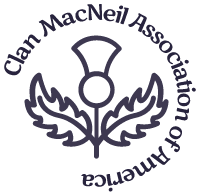MacNeil Tartans and Scottish Flags
Scottish tartan is a patterned cloth made from criss-crossing bands of different colors and widths. Until the middle of the nineteenth century, the highland tartans were only associated with either regions or districts, rather than a particular clan. The colors and designs were made by local artisans using materials and dyes that were available in the local area.
It's not a stretch then that the pattern became unique to the people living in a location and then, to a particular clan or family, each with its own name and history. Tartan is most commonly associated with kilts, but can also be used to make other clothing and accessories. It is an important symbol of Scottish heritage and culture.
Clan Macneil Tartans

Macneil of Barra Ancient Tartan

Macneil of Barra Modern Tartan

Colonsay-Gigha Ancient Tartan

Colonsay-Gigha Modern Tartan
Scottish Flags



MacNeil Tartans and Scottish Flags Read More »





